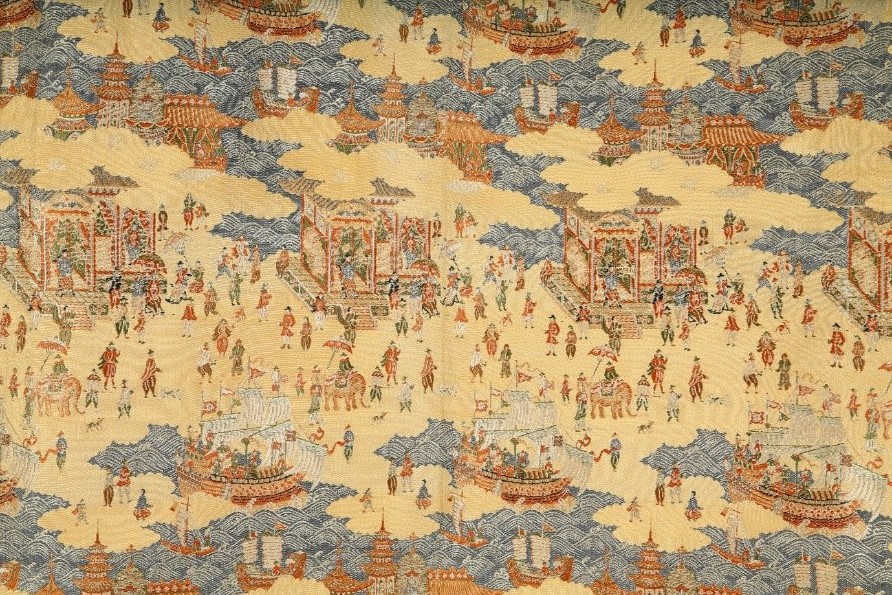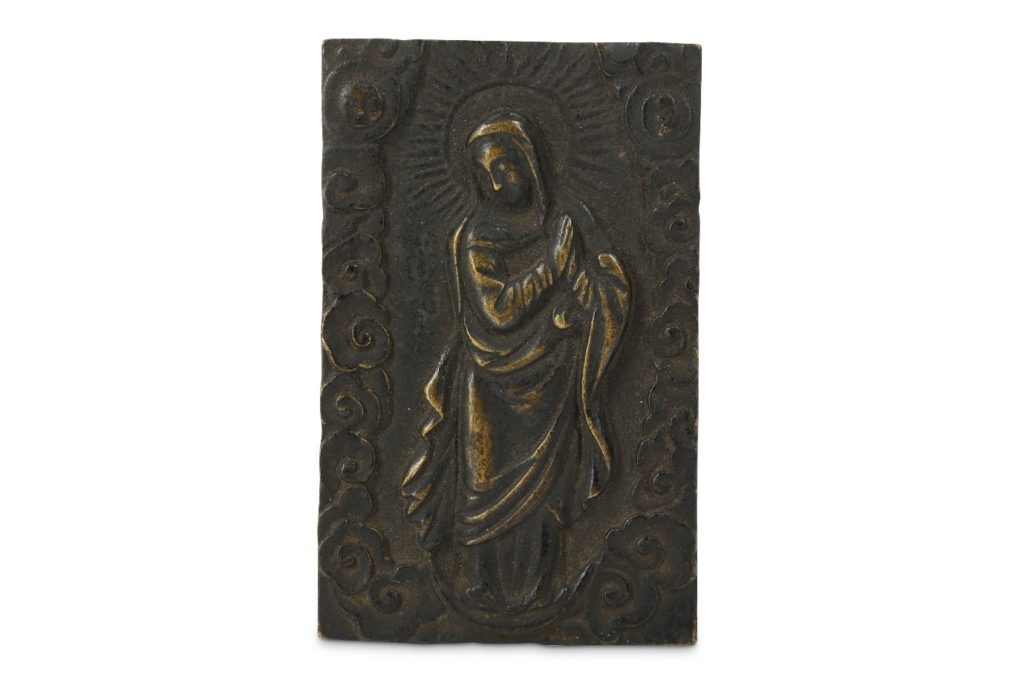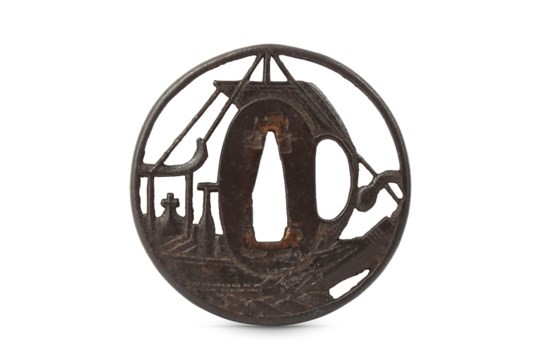Guns, Christianity and Lacquer Chests
Ahead of the Japanese Art sale on 12th November, which features a number of pieces from 16th and 17th century in the unique style called Namban Art, specialist Yasuko Kido delves into the history of this interesting period and explores the influences of European fashions in Japan.
In the mid 16th Century, Portuguese traders and Jesuits missionaries started to come to Japan, they were called Nambanjin (Southern Barbarians) as they came from the south. They introduced handguns along with Christian teaching.
 Lot 1004. A matchlock gun, Edo period. The iron octagonal barrel with bulbous muzzle, decorated with birds. Estimate: £3,000 - 3,500.
Lot 1004. A matchlock gun, Edo period. The iron octagonal barrel with bulbous muzzle, decorated with birds. Estimate: £3,000 - 3,500.
Japan was in a civil war at the time, the emperor had lost power and the feudal lords were fighting against each other to expand their territories. In order to ensure missionary work went smoothly, Jesuits had to engage themselves in trade with powerful samurai lords. Many lords converted to Christianity in order to gain access to guns and profit from trade. Lot 1020. A silk obi with Portuguese ship design. 19th/20th Century. Woven with the scenes from the Namban. Estimate: £600 – 800.
Lot 1020. A silk obi with Portuguese ship design. 19th/20th Century. Woven with the scenes from the Namban. Estimate: £600 – 800.
At first, Japan welcomed Christian missionaries, but later banned them. Many Catholics went underground becoming hidden Christians (Kakure Kirishitan) and continued practicing the religion. Buddhist icons were used as a decoy with disguised Christian Motif. Lot 1014. A small bronze plaque of Madonna. Possibly 16/17th Century. A rectangle panel cast in relief. Estimate: £300 - 500
Lot 1014. A small bronze plaque of Madonna. Possibly 16/17th Century. A rectangle panel cast in relief. Estimate: £300 - 500
During late 16th Century to early 17th Century, European and traditional Japanese art were mixed and evolved, creating a unique style called Namban Art. Travelling caskets and cabinets decorated in gold lacquer and mother-of-pearl inlay were highly prized in Europe, the word ‘Lacquer’ became a synonym to Japan.
[gallery columns="2" size="large" ids="166605,166606"]
Portuguese ships were also of interest to the Japanese and were frequently depicted in Japanese paintings and screens during this period and in the design of powder horns, food caskets, writing boxes and sword guards, like the example below. Lot 1010. An iron Sukashi namban tsuba. Edo period. Of circular form, pierced in the form of a Portuguese ship. Estimate: £500 – 600.
Lot 1010. An iron Sukashi namban tsuba. Edo period. Of circular form, pierced in the form of a Portuguese ship. Estimate: £500 – 600.
For more information on the any of the pieces from the upcoming sale, contact Specialist of Japanese Art, Yasuko Kido.
Japanese Art
Tuesday 12th November, 3pm
Click to view the catalogue online